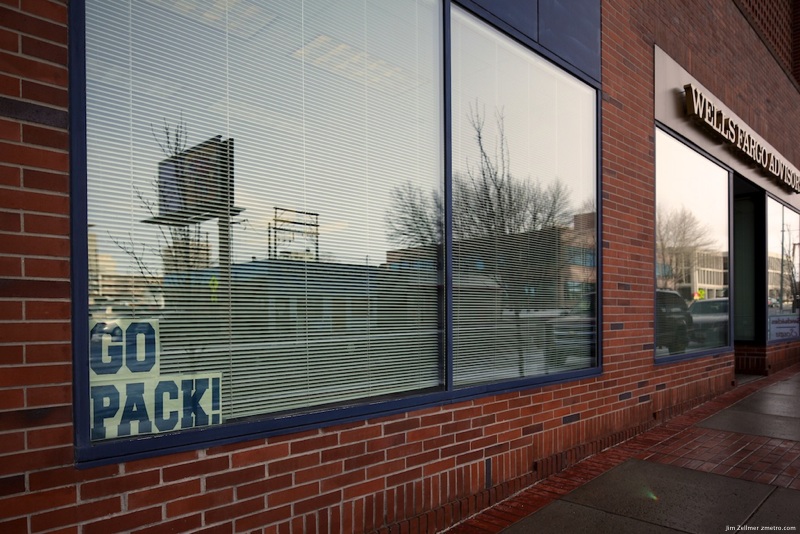
Category: Culture
Packer Fans

The “National Insecurity” of Imported Oil
Getting America off imported oil is always urged in the context of national security. No matter how often that refrain is repeated, however, it always points toward how much imported oil American motorists use.
It’s never about the amount of oil imported into the United States, refined into numerous products and shipped back out of the country. Nor are people arguing that we need to quit using imported oil for manufacturing concerns – like making fertilizers to grow corn, to make into ethanol to put into our gas, so we can quit importing oil. (That’s the most comical circular argument currently making the rounds.) But we also use oil for things like asphalt for our roads, and in the plastics industry, and even the most ardent “get America off imported oil” advocates don’t talk about constraining those industries.
In reality, the country from which we import the most oil is Canada. And I’m fairly certain that we aren’t too worried about the national security aspect of bringing that oil into America, now or in the future. Yet we’re still hearing the constant mantra that this is a national security issue, and that’s what troubles me most. And, if you own one of the nation’s 240 million vehicles, the “national insecurity of imported oil” refrain should trouble you, too.
How the crisis catapulted us into the future
Did the financial crisis change very much? That was my question as I went to the annual meeting of the World Economic Forum in Davos last week. The answer is: yes. Above all, it has accelerated the arrival of our future. Even for the winners, this is quite a shock.
It is three and a half years since the financial crisis began and a little more than two years since it reached its worst. Bob Diamond, chief executive of Barclays, gave the financial sector’s thanks to governments for the rescue. Now the mood is one of wary optimism. According to the International Monetary Fund’s World Economic Outlook update, global output grew in 2010 by 5 per cent, at purchasing power parity, and 3.9 per cent, at market exchange rates. This contrasts with declines of 0.6 per cent and 2.1 per cent, respectively, in 2009. The IMF expects growth to slow only slightly to 4.4 per cent at PPP and 3.5 per cent at market exchange rates, in 2011. Optimism continues to reign.
With the crisis fading into memory, how will historians assess its legacy? Journalists do not have the luxury of distance. So here are my guesses. I will start with possible turnrounds.
The crisis was neither the beginning of a depression nor the end of capitalism. But it has caused a tightening of financial regulation, particularly of banks, though this has occurred within the pre-existing intellectual and institutional framework. After three decades of deregulation, movement is in the opposite direction, though not without resistance.
Angela in Wunderland: What Germany’s got right, and what it hasn’t
THE West has rightly marvelled at China’s economic miracle. Less noticed is a minor miracle in its own midst. It is time to pay attention to Germany’s new Wirtschaftswunder.
Germany had a savage recession as manufacturing orders dried up, but its economy has since bounced back strongly, expanding by 3.6% last year, far faster than most other rich economies. For sure, this was partly a “bungee effect” after a particularly deep downturn, but it is no one-year wonder. By several measures, including keeping unemployment down (it is at its lowest since 1992) and the prosperity reflected in the growth of GDP per head, Germany was the star performer among the rich G7 countries over the past ten years (see article). Germans entered 2011 in their most optimistic mood since 2000, according to Allensbach’s polls. Business confidence is at its highest since the Ifo institute began tracking it 20 years ago.
What’s Germany’s secret? It helps that the country did not experience a property or credit bubble, and that it has kept its public finances admirably under control. But above all Germany’s success has been export-driven: unlike most other big rich economies it has maintained its share of world exports over the past decade, even as China has risen.
Warning!

A “shocking” hotel scene.
Three faces of India (and two faces of Tata)
I STARTED the day on Tuesday by visiting Tata’s steelworks in Jamshedpur. I found it awe-inspiring. The scale is mind-blowing: 2.5 hectares of industrial muscle. Even more mind-blowing is the steelmaking process itself: the giant cauldrons of molten steel, the huge trains shifting raw materials about, the fashioning of the molten steel into iron sheets. Three things struck me in particular. First, the relatively small number of people involved. Though based in a relatively poor company, this is a high-tech, high-skill, highly mechanised process. Second, the intelligence and enthusiasm of the people I talked to. These people love to talk about steel! And they love to recite war stories from their visits to other steel mills! (I apologise if I lost the plot every now and again). And third, the smoothness of the organisation. Every process seemed to be perfectly choreographed, and everybody seemed to know their role. Tata Steel has reduced its workforce from 78,000 in the mid-1990s to 35,000 today, while quadrupling the amount of steel it produces. We need a similar revolution in the public sector.
Antitrust bulldog Gary Reback pushes Google probe
In the 1990s, attorney Gary Reback helped goad the Department of Justice into launching the landmark antitrust lawsuit against Microsoft Corp. by hauling willing witnesses and damning information before any government body that would listen.
Reback, of Menlo Park law firm Carr & Ferrell LLP, is now waging a similarly relentless campaign against a technology giant of this era, Google Inc.
In an extensive interview with The Chronicle, he argued the Mountain View search company is engaging in a host of anti-competitive behaviors that are no less egregious than the earlier actions of Microsoft.
He also claims the Federal Trade Commission recently backed off an inquiry into certain of Google’s practices at the behest of the DOJ. It’s known to be conducting a separate investigation into, and possibly preparing to block, the company’s proposed acquisition of travel data company ITA Software. (Read on for his take on what that means.)
The Grounds of Courage: Dietrich Bonhoeffer
Early in January 1939, the precocious German theologian Dietrich Bonhoeffer, age thirty-two, learned that all males in his age cohort had been ordered to register with the military. A dedicated opponent of the Nazi regime, he might have responded by declaring himself a conscientious objector, but there were two problems with such a course of action. The first was that Bonhoeffer, although pacifist by inclination, was not opposed to violence under all conditions; and he would later play an active role in the conspiracy led by German generals to assassinate Hitler. The second was that his fame in the Confessing Church (more on this below) might encourage other religious leaders critical of the regime to do the same, thereby bringing them under greater suspicion and undermining their efforts to prove that Nazi policies, and especially their rapidly intensifying Jew-hatred, were contrary to the teachings of Jesus Christ.
The solution was provided by America’s most illustrious theologian, Reinhold Niebuhr. Nine years earlier, Bonhoeffer had spent a year in the United States as a free-floating exchange student at Union Theological Seminary, arriving not long after Niebuhr had moved there from Detroit. He had made such a positive impression on Union’s faculty that Niebuhr jumped at the opportunity to bring him back. If we fail to offer him a job, he told Union’s president, Henry Sloane Coffin, Bonhoeffer will wind up in a concentration camp. This was not the stuff of run-of-the-mill letters of recommendation. Union extended the offer. Grateful to have a way out of his dilemma, Bonhoeffer booked passage, and in June 1939 found himself safe in America.
David Hockney’s friends in art: the iPad and iPhone
David Hockney may be pretty isolated here in Yorkshire, some four hours by train from London, but that’s the way he likes it. Ensconced near the quiet rural landscape he’s immortalized in paintings and watercolors, he has more time not only to draw but to experiment with new ways of making art.
“We think we’re way ahead here,” he confides. “We need this little remote place to be observant about the medium.”
The art-making medium he’s using most often these days is the iPad, brother to the iPhone, which he took up earlier. Whether he’s lying in bed or driving through snow-covered woods, his ever-ready iPhone and iPad are instant drawing pads, always by his side. The electronic duo keeps him in touch with not only his craft but a small group of friends and colleagues who regularly receive his colorful missives of landscapes, flowers, cap or ashtray.